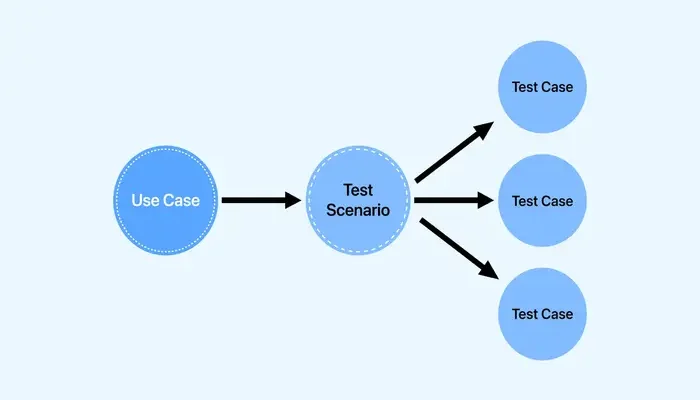In the rapid world of software development, handling test scenarios that remain effective over time is crucial for ensuring consistent and reliable quality assurance. As apps progress, test scripts can become outdated, resulting in inefficiencies and test failures. To attain long-term automation success, teams must execute strategies that improve adaptability, test stability, and maintainability. This comprises designing reusable and modular test cases, leveraging version control, and constantly refining automated test frameworks. By prioritizing these best practices, companies can maintain reliable automated tests while reducing technical debt and maintenance overhead.
The Importance of Automation Testing
Test Automation is significant in modern software development as it ensures app quality, effectiveness, and reliability. Unlike manual tests, which can be time-consuming and vulnerable to manual errors, the automated test allows QA teams to implement test cases rapidly, covering a diverse test scenario with less effort.
Test Automation’s Advantages
- Improved Accuracy – Eliminates manual errors, guaranteeing reliable and consistent test implementation.
- Speed and Effectiveness– Automates recurring test cases, reducing human effort and accelerating the test procedure.
- Increased Test Coverage – Enables testing across several devices, platforms, and configurations for complete validation.
- Early Bug Identification – Detects issues early in the development cycle, reducing the effort and expense required for fixes.
- Cost and Time Savings – Reduces manual intervention, reducing resource allocation and test expenses.
- Supports CI/CD Integration – It smoothly incorporates CI/ CD (continuous integration and delivery) pipelines, allowing speedy and more reliable software releases.
- Maintainability and Scalability– Adapts to growing software requirements, making long-term test management easier.
Why is it significant to maintain Test Scenarios in Automation?
Managing test scenarios in automation is crucial for confirming the accuracy, reliability, and long-term success of automated tests. As software apps grow, poorly maintained or outdated test cases can result in inefficiencies, false positives, and test failures. Let’s find out why maintaining test scenarios is critical:
- Reduces False Negatives and Positives– Maintaining test scripts regularly controls incorrect test failures or passes, enhancing test reliability.
- Ensures Test Accuracy– Keeping test scenarios updated ensures that test automation appropriately validates the app’s present functionality.
- Optimizes Test Performance– Reducing redundant or outdated test cases enhances implementation speed and resource efficiency.
- Enhances Adaptability– Well-maintained testing can rapidly adapt to User Interface changes, API alterations, and fresh features without necessitating major rewrites.
- Improves Debugging & Maintenance – An up-to-date and structured test suite simplifies debugging failures and managing test frameworks over time.
- Better Collaboration- Updated scenarios facilitate great communication between QA testers, software developers, and stakeholders, guaranteeing everyone is aligned on test objectives.
- Assist Continuous Integration (CI/CD) – Updated test scenarios guarantee seamless implementation in CI/CD pipelines, allowing rapid and effective software releases.
- Regression Tests- By maintaining a complete set of test scenarios, you can efficiently conduct regression tests to validate that fresh code changes haven’t broken current functionalities.
By maintaining up-to-date and robust test scenarios, quality assurance teams can maximize automation’s profits, reduce technical debt, and confirm long-term test success.
Key Strategies for Robust Test Scenarios
1. Prioritize High-Value Testing
Not all test scenarios are equally valuable. Prioritizing high-value testing—such as performance benchmarks, critical user flows, and safety checks—guarantees that automation efforts focus on areas with the greatest impact on software quality.
2. Design Reusable & Modular Scripts
Generating reusable and modular test scripts enhances maintainability & decreases redundancy. By designing test cases as reusable, independent components, QA teams can rapidly accept them to app changes without extensive rewrites.
3. Implement Data-Driven Tests
Data-driven testing improves flexibility by enabling test cases to run with several data sets. This approach decreases duplication, increases test coverage, and guarantees comprehensive validation across diverse input scenarios.
4. Incorporate with Continuous Integration (CI) Pipelines
Automated tests must be smoothly incorporated into CI/CD pipelines to guarantee early detection of defects. Executing tests automatically after code changes assists in maintaining software quality while fast-tracking development cycles.
5. Frequently Review and Update Test Cases
Regularly review and improvement of test cases to prevent obsolescence. As software features progress, automated test scripts must be updated to reflect User Interface changes, new traits, and error fixes.
6. Leverage Abstraction Layers for User Interface (UI) Changes
To reduce maintenance efforts, QA teams can use abstraction layers to separate test logic from User Interface (UI) components. This approach shields test scripts from frequent User Interface (UI) changes, making updates simpler and reducing test failures.
7. Foster Collaboration Between Teams
Comprehensive reporting and analytics tools help detect bottlenecks, flaky tests, and areas for improvement. Confirming shared responsibility and clear communication for test maintenance improves the overall effectiveness and quality of automated tests.
8. Use Thorough Reporting & Analytics Tools
Comprehensive reporting & analytics tools help detect bottlenecks, flaky tests, and portions for improvement. Scrutinizing test implementation trends allows QA teams to optimize test scenarios and enhance test reliability.
By employing these strategies, enterprises can generate a robust test automation suite that efficiently adapts to growing apps, reducing maintenance overhead and increasing the worth of automated testing throughout the SDLC (software development lifecycle).
What Challenges can arise in managing Test Automation Scenarios?
Maintaining scenarios can be tricky owing to multiple factors that affect the effectiveness and stability of automated tests. Some common challenges comprise:
- Frequent Application Changes – API modifications, User Interface (UI) updates, and feature improvements can cause automation testing to break if they are not updated frequently.
- Flaky Testing – Tests might create inconsistent results because of synchronization issues, timing problems, or unstable locators.
- High Maintenance Effort – As test suites grow, managing them can become resource-intensive and time-consuming.
- Test Data Management – Keeping test data accurate, relevant, and accessible across diverse environments can be complicated.
- Dependency on UI Locators – Depending on unstable or dynamic locators (such as auto-generated IDs) can result in regular test failures.
- Lack of Reusable and Modular Tests – Poorly structured test cases make maintenance challenging and increase redundancy.
- Slow Implementation & Performance Bottlenecks – The rising number of test cases can result in extended implementation times, which can affect test effectiveness.
- Incorporation with CI/CD Pipelines – Guaranteeing seamless execution of test automation within CI (continuous integration) pipelines necessitates ongoing optimization.
- Lack of proper Team Collaboration – Limited communication between business analysts, QA testers, and software developers can result in misaligned or outdated test cases.
Fixing these challenges through regular maintenance, strategic test design, and robust test automation frameworks helps guarantee long-term success in automation testing.
How can Cloud-powered platforms like LambdaTest support automation test maintenance?
Cloud-based AI-powered platforms like LambdaTest play a pivotal role in managing automated test scenarios by delivering flexibility, scalability, and improved test capabilities. It supports an extensive suite of frameworks and tools incorporation for app automation testing, and web tests such as Puppeteer, Cypress, Playwright, Selenium, XCUITest, Taiko, Espresso, Appium, etc. Let’s find out how LambdaTest helps streamline automated test maintenance:
- Cross-Platform and Cross-Browser Tests– LambdaTest enables testing across various OSs, web browsers, and gadgets, reducing maintenance stress and guaranteeing compatibility.
- Flexibility with Cloud Infrastructure – Effortlessly scale test implementation by leveraging cloud-powered parallel tests, reducing implementation time while handling test stability.
- Seamless CI/CD Incorporation – It supports incorporation with popular CI/CD tools (such as Azure DevOps, GitHub Actions, and Jenkins), guaranteeing seamless test execution within automated pipelines.
- AI-Centric Test Insights – Detects flaky tests and gives actionable insights to improve test maintainability and reliability.
- Automated Video Logs and Screenshots – This tool helps debug test failures intelligently by capturing real-time video recordings and screenshots of test runs.
- No Infrastructure Maintenance – Removes the necessity for maintaining in-house test environments, upkeep expenses, and reducing setup.
- Real Device Tests – Guarantees tests are maintained across diverse real-world environs by allowing tests on real desktop and mobile gadgets.
- Collaboration and Reporting Tools —Provides comprehensive logs and reports for better team collaboration and rapid issue resolution.
By leveraging platforms like LambdaTest, quality assurance teams can considerably reduce the effort needed to manage automated tests while guaranteeing better reliability, high test coverage, and faster test implementation. To learn more about the LambdaTest platform, follow this comprehensive LambdaTest demo video and documentation to get familiar with the traits that can support you boost your automated test process.
You can also subscribe to the YouTube Channel for the recent updates on tutorials around Playwright tests, Selenium tests, Cypress tests, and more.
Best Practices for Updating Test Scenarios
- Review and Prioritize Frequently – Regularly assess test scenarios to ensure they align with present business and technical needs. Organize high-impact test cases that cover crucial functionalities.
- Use Reusable and Modular Test Design – Structure test cases with reusable and modular components to reduce maintenance efforts when updates are needed.
- Leverage Version Control – Track modifications in test scripts using version control systems such as Git to manage a structured history of updates.
- Execute Data-Driven Tests – Separate test data from scripts, enabling updates to be made without changing the test logic.
- Automate Test Maintenance – Utilize self-healing or AI-driven automated test tools to adjust scripts automatically when UI components or app behavior changes.
- Collaborate Across Teams – Boost communication between QA Engineers, software developers, & business analysts to guarantee test scenarios remain relevant.
- Incorporate CI/CD Pipelines – Automate test implementation in continuous integration (CI) environments to promptly find and address outdated test cases.
- Validate Against Business Logic – Confirm test updates align with growing business rules and user workflows to manage meaningful test coverage.
- Examine and Analyze Test Reports – Frequently review test execution reports to detect failing or flaky testing that needs revision.
- Retire Redundant Test Cases – Eliminate redundant or obsolete tests to keep test suites lean and effective and reduce implementation time.
By employing these practices, the Quality Assurance (QA) team can certify their scenarios remain scalable, manageable, and accurate in the long term.
Conclusion
Maintaining dynamic test scenarios is essential for guaranteeing the long-term success of automated tests. As apps progress, test scripts must be maintainable, adaptable, and resilient to alterations in the software environment. By executing best practices such as data-driven testing, CI/CD integration, modular test design, and proactive test maintenance, QA teams can lessen technical debt and improve test reliability.
Leveraging cloud-powered platforms such as LambdaTest further streamlines automated test maintenance by allowing real device tests, cross-browser compatibility, and scalable execution. By regularly refining test strategies and promoting collaboration, companies can attain sustainable test automation, guaranteeing high software quality and effectual development cycles.
Frequently Asked Questions (FAQs)
- How can test scenarios be designed for extended success?
To ensure success, test scenarios must be reusable, modular, and data-driven. Implementing abstraction layers, incorporating tests into CI/CD pipelines, and parameterizing test data, help improve maintainability.
- What role does Version Control play in Automation Tests?
Version control systems (for example, Git) help QA track changes in test scripts, collaborate professionally, and revert to earlier versions when required, ensuring reliability in automated tests.
- How do Data-driven Tests enhance Test Automation?
Data-driven testing enables the execution of similar test scenarios with several data sets, reducing redundancy, improving coverage, and making tests more scalable.
- How can teams manage frequent User Interface (UI) changes in Automation Tests?
Using abstraction layers like keyword-driven frameworks or Page Object Model (POM) enables QA tests to be more resilient to User Interface (UI) changes by separating test logic from UI components.
- What tools can help in managing test automation success?
Tools such as Appium, Selenium, JUnit, TestNG, and cloud-centric platforms such as LambdaTest assist in scalable, mobile, and cross-browser tests, ensuring dynamic test automation.
- How can cloud-powered platforms like LambdaTest support test automation maintenance?
LambdaTest offers a scalable cloud-based infrastructure for mobile and cross-browser tests, guaranteeing tests run smoothly across real-time devices and web browsers, enhancing test execution efficiency, and controlling maintenance efforts.
Global Technology Impact on Society in 2024










Comments